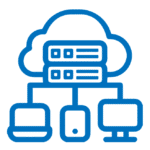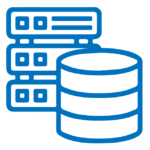Having Trouble Reconciling Lab Automation, Science and IT?
Written by Steven van Helden
It starts with a simple idea
Driven by the science and the impact you may have on improving your R&D process, you rush into a small automation project without thinking too much about the broader consequences. And then you find yourself overwhelmed in the world of lab automation!
Imagine you finally got it in your lab: 
Thinking about the next step(s)


Welcome to the domain of FAIR data!


Following FAIRification of your data, you will finally be ready for data mining and exploitation of your valuable data. That is, after selection and installation of sophisticated data mining software. Maybe this is the right time to dive into AI as well?
I need help!
This is the point where you may feel overwhelmed. What started as a simple idea for improvement turns into a serious project involving multiple disciplines you are not an expert in. This is where wega can be your partner, there is no need to re-invent the wheel. The Research Data and Knowledge Management group at wega has expertise in the process described above. We know the business processes and the software vendors that may be of interest to you. And the earlier we come into the game, the easier it is to anticipate all the hurdles that you may find on your road. So let’s discuss how we can work together to turn your (not so-)simple idea into reality!
